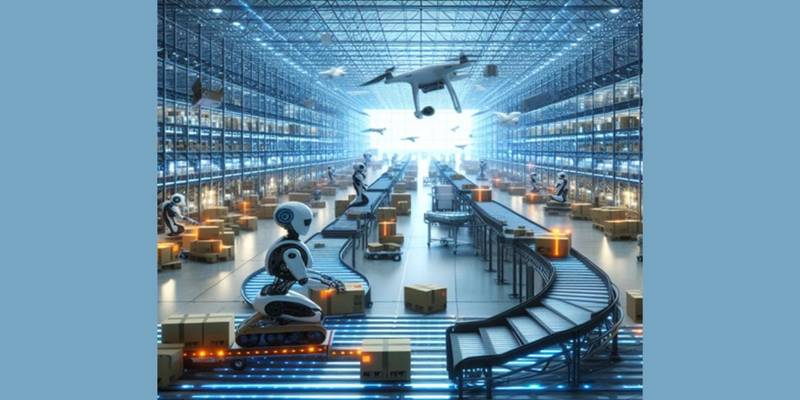The global packaging robots market is predicted to increase significantly, from US$3.8 billion in 2022 to US$7.5 billion by 2032, according to statistics from Fact. MR. For the years 2022 to 2032, this expansion is anticipated to sustain a strong compound annual growth rate (CAGR) of 7%.
Robots that package are known for their flexibility and are designed to quickly and economically complete labor-intensive jobs. These robots are easy to operate thanks to their powerful software and sensors, intuitive interfaces, and integrated controls. Their dependability, accuracy, and flexibility are their main features. They can do a variety of tasks, including picking and placing, boxing, palletizing, and warehousing.
Because packaging robots may lower operating costs, increase packaging effectiveness, and improve supply chain efficiency, many businesses choose to use them. These robots do a variety of packing tasks using the proper end-of-arm equipment. They are simple to integrate into various workspaces because they come in a variety of sizes, payloads, reaches, and mounting options.
Key Takeaways from the Market Study
· The global packaging robots market is slated to reach US$ 7.5 billion by 2032.
· Sales of clamp grippers are expected to increase at a CAGR of 6% from 2022 to 2032
· Market in Germany is estimated to develop at a CAGR of 4% through 2032.
· Market in Japan is anticipated to evolve at a CAGR of 3.5% over the forecast period (2022-2032).
Vacuum grippers utilize suction force generated by a vacuum to perform various tasks, such as installation, packaging, and material handling. In the food and beverage sector, manufacturers are increasingly transitioning from traditional assembly line methods to fully automated assembly lines to produce both standard and customized packaging.
This shift towards automation highlights the adoption of packaging robots equipped with vision capabilities, which are particularly preferred for assembly line operations. Employing packaging robots in these processes ensures superior quality, responsiveness, reliability, and precision for both primary and secondary applications.
Market Segmentation:
· By Gripper Type: Claw, Clamp, Vacuum, Others
· By Packaging Type: Primary Packaging, Secondary Packaging, Tertiary Packaging
· By Application: Food & Beverages, Pharmaceuticals, Consumer Products, Logistics, Others
· By Region: North America, Europe, Asia Pacific, Latin America, Middle East & Africa
Competitive Landscape
Top companies in the packaging robots market plan to conduct research and development initiatives to create unique robotic packaging systems to meet the increased demand from factories throughout the world. Key companies are anticipated to release advanced products to provide a reliable pick-and-place operation at work as smart factories continue to evolve and industrial automation is used.
In 2020, one of the biggest manufacturers of robots, Fanuc Corporation, introduced the R-2000id robot with cable-integrated technology. This robot has advanced features including picking and positioning and auto checking in addition to packaging.
Winning Strategy
Key market players are concentrating on growing their customer base internationally. Top suppliers are providing advanced robotic machines that may be used for simultaneous picking, palletizing, and packing tasks.
In 2020, Bosch Packaging Technology’s German-based packaging machinery division was acquired by Syntegon Technology.
More Valuable Insights on Offer
Fact.MR presents an analysis of the global packaging robots market, presenting historical demand data (2017-2021) and forecast statistics from 2022 to 2032.
The study divulges essential insights on the market based on gripper type (claw, clamp, vacuum, others), packaging type (primary packaging, secondary packaging, tertiary packaging), and application (food & beverages, pharmaceuticals, consumer products, logistics, others), across five major regions (North America, Europe, Asia Pacific, Latin America, and MEA).

